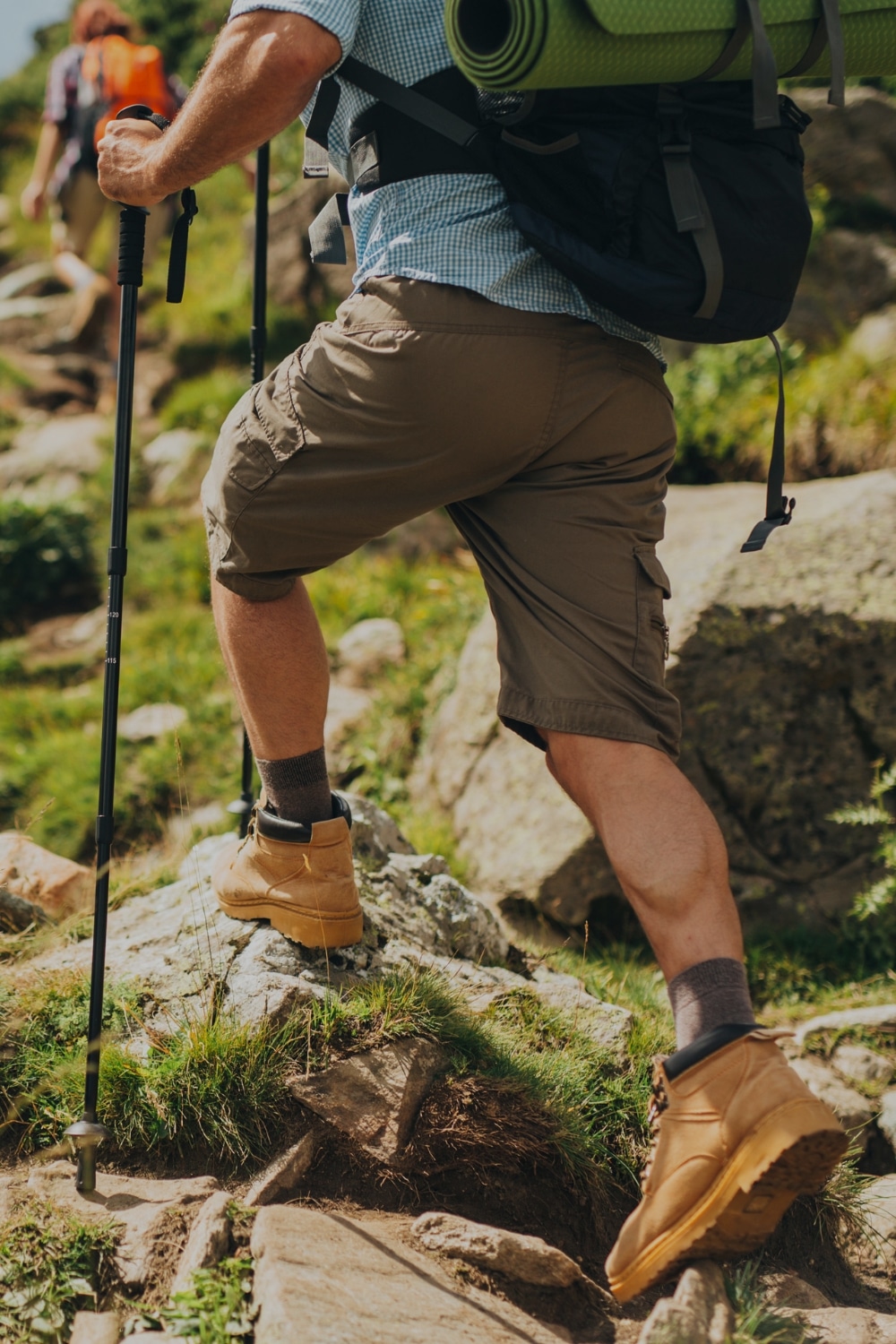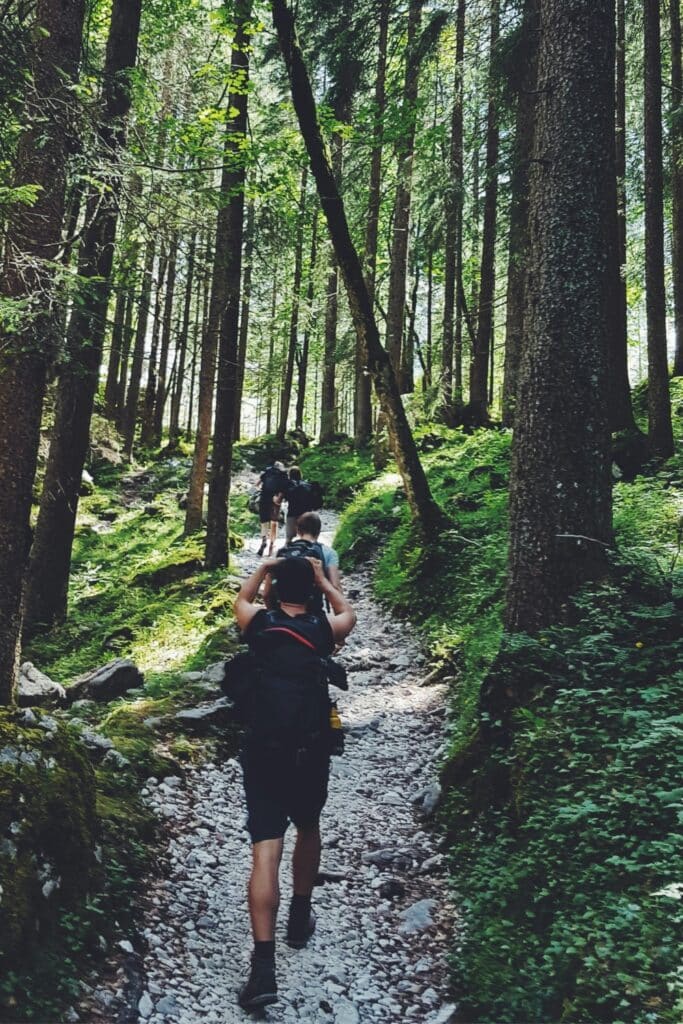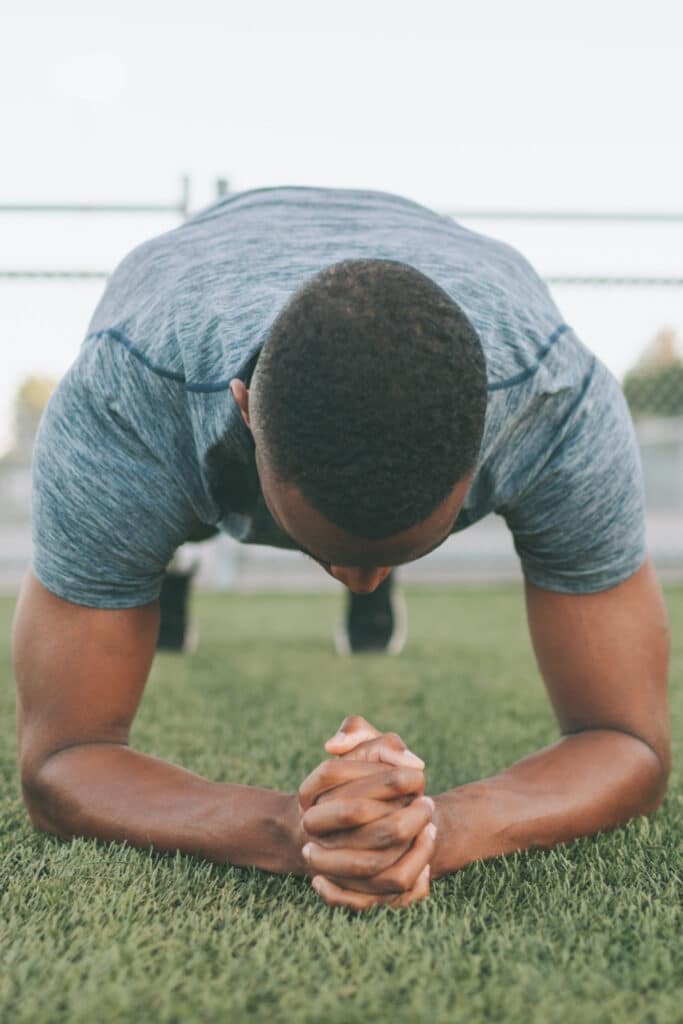
To prepare for hiking and backpacking, focus on exercises like walking uphill, step-ups, lunges, squats, calf raises, and planks. Begin with walking uphill to build endurance, using comfortable shoes and maintaining a steady pace. Step-ups recreate climbing actions, strengthening your legs and improving balance; use a bench around knee height. Lunges target key leg muscles, enhancing coordination, while squats support uphill climbing by strengthening your thighs and core. Calf raises improve stability on uneven terrain, and planks boost core strength for better overall balance. Incorporating these exercises consistently can greatly enhance your hiking fitness and boost your hiking performance with time.

Walking uphill is a fantastic way to build endurance and strength for hiking. Start by choosing a hill with a moderate incline. Wearing comfortable shoes is essential to protect your feet and support your ankles. Consider investing in essential gear that might enhance your hiking experience. Begin your walk at a steady pace, keeping your back straight and your eyes forward. Swing your arms naturally to help maintain balance and momentum. If you get tired, it's okay to take short breaks, but try to keep moving. Focus on your breathing, inhaling through your nose and exhaling through your mouth. Gradually increase the hill's steepness or the distance you cover as you get stronger. Remember to stay hydrated, especially on warm days. Walking uphill regularly will make hiking easier and more enjoyable over time.

Some might find step-ups to be an accessible yet challenging exercise that greatly benefits your hiking fitness. They mimic the action of climbing uphill, strengthening your legs and improving balance. An important aspect of preparing for multi-day trips is to build endurance, which this exercise effectively targets. To start, you'll need a sturdy platform or bench about knee height. Stand in front of it and follow these steps:
Practicing step-ups regularly enhances your endurance and prepares you for uneven hiking trails, making each hike more enjoyable.

If you're looking to enhance your hiking fitness, lunges are a fantastic exercise to incorporate into your routine. They target the muscles in your legs, including your quadriceps, hamstrings, and glutes, which are vital for hiking. Lunges also help improve your balance and coordination, essential for maneuvering uneven surfaces. Additionally, firmness testing can guarantee your form remains stable, similar to the stability required in a quality sleeping pad. To perform a lunge, start by standing with your feet hip-width apart. Take a step forward with your right foot, lowering your hips until both knees are bent at about a 90-degree angle. Confirm your right knee is directly above your ankle, and your left knee hovers just above the ground. Push back to the starting position, then repeat with the left leg. Aim for 10-15 repetitions per leg. Consistent practice of lunges will build strength and endurance, making your hiking experiences more enjoyable.

Building on the leg strength developed with lunges, squats are another powerful exercise to boost your hiking fitness. Squats help strengthen your thighs, hips, and core, making uphill climbs easier. To perform a squat, start by standing with your feet shoulder-width apart. Lower your body by bending your knees and pushing your hips back, keeping your chest up and eyes forward. Go as low as comfortable, then push through your heels to return to standing. Focus on maintaining balance and form.
Here's what to remember:

Calf raises are a simple yet effective exercise to enhance your hiking readiness, focusing on strengthening your calves for improved stability and endurance on uneven terrain. To perform a calf raise, stand with your feet hip-width apart and place your hands on a wall or a sturdy surface for balance. Slowly lift your heels off the ground, rising onto the balls of your feet, and hold this position for a moment. Lower your heels back down gently. Repeat this movement for about 10 to 15 reps, gradually increasing sets as you build strength. Incorporate calf raises into your routine a few times a week. Consistent practice will help you tackle inclines and descents during hikes with more confidence.

After strengthening your calves, it's important to focus on your core with plank exercises, which play a key role in hiking fitness. Planks help you build endurance and stability, essential for long hikes. To get started, try these variations:
These exercises strengthen your core, supporting your hiking adventures.
When choosing footwear for hiking fitness training, look for shoes with good grip, support, and durability. You'll want hiking boots or trail shoes with sturdy soles to prevent slipping on uneven surfaces. Make sure they have a comfortable fit, with enough room for your toes, but not too loose. Waterproof or water-resistant materials can help keep your feet dry. Always break in new shoes before long hikes to avoid blisters.
Think of training like building a house; you need a strong foundation. Start by training two to three times a week, gradually increasing the intensity. Begin with short walks, then add exercises like lunges or squats to strengthen your legs. Listen to your body, and don't push too hard. Consistent, steady training helps your body adapt. Remember, it's not about speed but endurance, making your future hikes more enjoyable and safe.
Before a hiking workout, eat a balanced meal with carbs, protein, and healthy fats. Start with whole grains like oatmeal or whole wheat bread for energy. Add lean protein, such as eggs or chicken, to support muscle function. Include fruits or vegetables for vitamins and minerals, and drink water to stay hydrated. Eat about 1-2 hours before your workout to give your body time to digest and convert food into energy.
Picture your muscles as rubber bands, ready to snap with energy. Before hiking exercises, start with dynamic stretches like leg swings, arm circles, and ankle rolls. These movements warm up your body, increase flexibility, and prepare your joints. Next, try lunges to stretch your hips and strengthen your lower body. Finally, don't forget calf raises; they boost your stamina for steep trails. Do these stretches to guarantee a smooth hiking experience.
To prevent blisters during hiking training, start by wearing well-fitted, moisture-wicking socks to keep your feet dry. Choose hiking boots that fit snugly without being too tight, and break them in before your hike. Apply blister prevention tape to areas prone to friction, like heels and toes. Keep your feet clean and dry, taking breaks to air them out. Finally, trim your toenails to avoid unnecessary pressure inside your boots.
